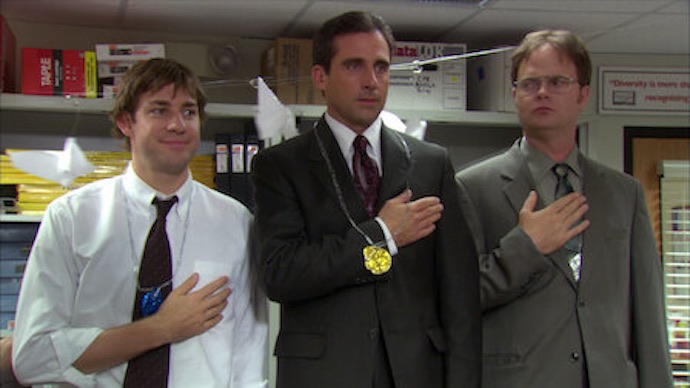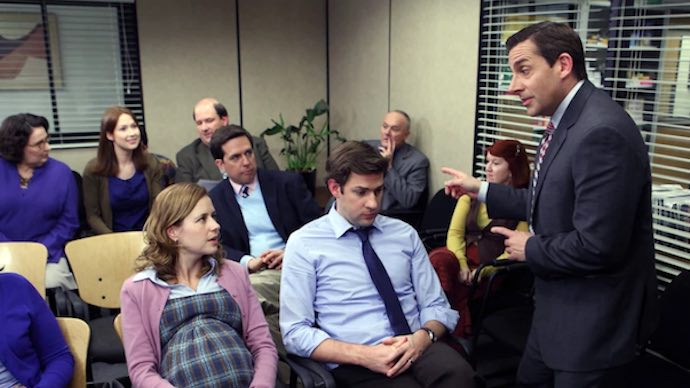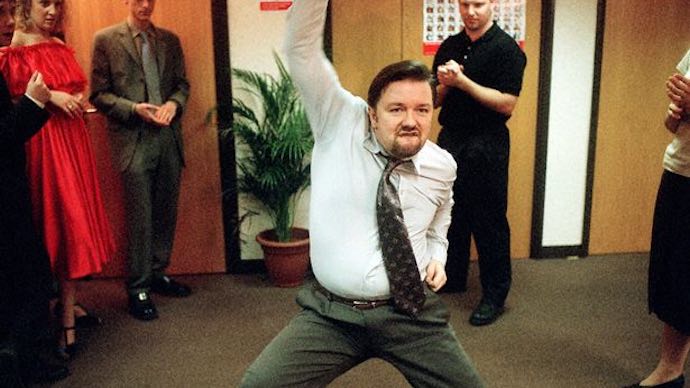And no TV sitcom has had to endure this debate more than the US version of The Office, which adapted the UK version of The Office. Which series was better? The US or the UK? Michael Scott or David Brent? Unsurprisingly, those in the US often side with the US version while those in the UK side with the UK version—each version, after all, was tailored towards their respective audiences. The original leaned into British-flavored cringe comedy while the adaptation made characters more palatable. Is it possible to say that one is objectively better than the other? On a factor by factor basis, perhaps. Here’s our take as we compare both the US and UK versions of The Office to see how each excelled over the other.
1. Legacy and Longevity
Starting with the most obvious point: the US version of The Office went on for nine seasons (188 episodes) while the UK version had two seasons (12 episodes + two-part Christmas special). Why was the UK version so short? Because creators Ricky Gervais and Stephen Merchant had a specific story in mind to tell, and they felt the time was right to close that story after two seasons. The US version had much more time to evolve and flesh out its style, originally starting as a near-copycat of the UK version with a Michael Scott who was far less likable than the one we know by show’s end. In terms of picking up an audience and going wild with popularity, the US version undoubtedly had a better run. But the UK version punched much harder as a pioneer, winning awards globally and garnering dedicated fans in a much shorter time than the US version. It comes down to what type of legacy you want in a TV show. For us, both are legendary in their own ways, but if we had to pick a winner, it’d be the US version for evolving into its own identity, rising above other TV sitcoms of its era, and maintaining its status for so many seasons.
2. Characters
At the start of both US and UK versions of The Office, there are four main characters who are basically carbon copies of each other:
David Brent (UK) and Michael Scott (US)Tim Canterbury (UK) and Jim Halpert (US)Dawn Tinsley (UK) and Pam Beesly (US)Gareth Keenan (UK) and Dwight Schrute (US)
While the US versions of these characters eventually diverged and became their own thing after a few seasons, both shows had far different approaches to their other supporting characters from the get-go. In the UK version, the main stars of David, Tim, Dawn, and Gareth were the primary focus of every episode. Everyone else in the office served as a guest star or infrequent supporting character. In the US version, the office itself was much bigger with several more characters who each filled their own roles. With more time to explore their characterizations, these side characters eventually grew into their own. By the end of the US version’s run, characters who were initially unimportant—like Kevin, Meredith, Kelly, Ryan, and Creed—all became significant and iconic. So, because the primary four characters were all variants of one another, we’re giving the win to the US version when it comes to characters. It isn’t easy to develop such a wide cast with such success.
3. Plots and Narratives
The original narrative of the BBC show saw a paper company going through hard times, with Tim and Dawn’s will-they-won’t-they storyline as backdrop to David Brent’s struggles and eventual dismissal. The first few seasons of the US version played out in similar fashion, except without Michael leaving the company. Once those initial conflicts were resolved, the show set out into uncharted waters—but always anchored by Michael Scott’s unusual leadership and Jim and Pam’s romance. So much of it was so funny and so good that you didn’t want the show to ever stop. But after Steve Carell called it a day with the seventh season, the wheels of the show started coming off. As good as the US version of the show was, everything about it stemmed from the original premise of the UK version, and it fumbled quite a bit towards the end. For that reason, the UK version takes this one.
4. Humor
Between the US and UK versions of The Office, which show was funnier? It’s an impossible question, given that humor is subjective and individual. Culturally, the UK show reflects the cringeworthy basis of Britishisms, which are amplified to eleven and showcased with unwavering brutality by Ricky Gervais as David Brent. That kind of humor wouldn’t fly with US audiences back in 2005, so it had to be adjusted—still cringey but less so, with more wacky humor mixed in. The fact that the US version was still too cringe-inducing for many US watchers is proof enough that this change was necessary. If you’re looking for a sitcom that’s awkward but ultimately feelgood, the US show is better for it. If you want a show that hits hard and fast within a limited number of episodes, the UK series takes it by a nose.
5. Michael Scott vs. David Brent
Perhaps the most overt dividing line between fans of the US version and fans of the UK version comes down to this: with all things said and done, who was the better character, David Brent or Michael Scott? In the UK show, David Brent was the boss from hell—a moron who disrupted the workforce and tried too hard to be the comedic center of attention, while spouting nonsense that wouldn’t fly today. In the US show, Michael Scott started out as a kind of David Brent clone but soon morphed into a different beast—an annoying jackass whose misguided behavior was always rooted in good intentions. With both shows now in the rear-view mirror, Michael Scott might always be the one who’s more beloved and better remembered. But in terms of being a standout TV character? It’s hard to think of him as one. David Brent was shocking, difficult, and original. In the end, both versions of the show were great in their own ways. The one that’s better for you will depend on your own sensibilities. Do you want to be challenged and offended? Watch the UK show. Want to feel safe and warm? Watch the US show. That’s the bottom line.








![]()

